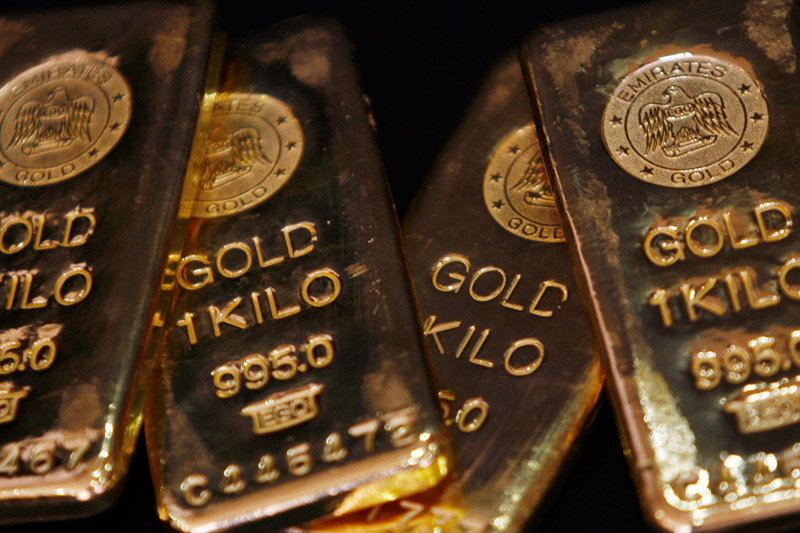Investing.com - Gold prices struggled for direction on Monday, as traders continued to mull the timing of a Federal Reserve rate hike following the release of solid U.S. nonfarm payrolls data on Friday.
Gold futures for December delivery on the Comex division of the New York Mercantile Exchange inched up 50 cents, or 0.05%, to trade at $1,094.60 a troy ounce during European morning hours.
On Friday, gold fell to $1,081.40 before recovering to end the session at $1,094.10, up $4.00, or 0.37%.
The Labor Department reported that the U.S. economy added 215,000 jobs last month, slightly lower than forecasts for an increase of 223,000, but still consistent with strong employment growth.
The unemployment rate remained unchanged at a seven-year low of 5.3%, in line with expectations.
Hourly earnings, a component of the jobs report that the Federal Reserve has said must rise, ticked up 0.2%, also matching forecasts after stalling in the previous month.
The data did little to alter expectations for a September rate increase by the Federal Reserve, but it tempered speculation for multiple rate hikes before the end of the year.
Gold fell to a five-and-a-half year low of $1,072.30 on July 24 amid speculation the Federal Reserve will raise interest rates in September for the first time since 2006.
Expectations of higher borrowing rates going forward is considered bearish for gold, as the precious metal struggles to compete with yield-bearing assets when rates are on the rise.
The U.S. dollar index, which measures the greenback’s strength against a trade-weighted basket of six major currencies, was little changed at 97.72 early Monday, not far from last week's three-month highs of 98.42.
The greenback has been boosted recently by expectations that the improving U.S. economy will prompt the Federal Reserve to raise short term interest rates as early as September.
Later Monday, Federal Reserve Governor Stanley Fischer and Atlanta Fed President Dennis Lockhart are to speak; their comments will be closely watched.
Investors are also looking ahead to Thursday’s U.S. retail sales data for a further indication on the durability of the economic recovery.
Elsewhere in metals trading, copper prices bounced off a six-year low on Monday, as a recent batch of disappointing Chinese economic data fueled speculation policymakers in Beijing will have to introduce further stimulus measures to boost growth.
Copper for September delivery on the Comex division of the New York Mercantile Exchange inched up 1.1 cents, or 0.48%, to trade at $2.344 a pound during morning hours in London.
On Friday, copper tumbled to $2.313, a level not seen since June 2009, before ending at $2.332, down 0.8 cents, or 0.36%. Copper prices lost 2.3 cents, or 1.31%, last week, the sixth consecutive weekly decline, amid growing concerns over the health of China's economy.
Government data released on Sunday showed that Chinese producer prices fell by a more-than-expected 5.4% in July, the 40th straight monthly decline and the worst reading since October 2009.
On Saturday, data showed that Chinese exports slumped 8.3% from a year earlier, far worse than forecasts for a decline of 1.0% and the biggest fall in four months. Imports dropped 8.1%, broadly in line with expectations for a drop of 8.0%.
A slowdown in domestic demand indicated a recovery in the broader economy remains fragile and may need further government stimulus.
The Asian nation is the world’s largest copper consumer, accounting for almost 40% of world consumption last year.
